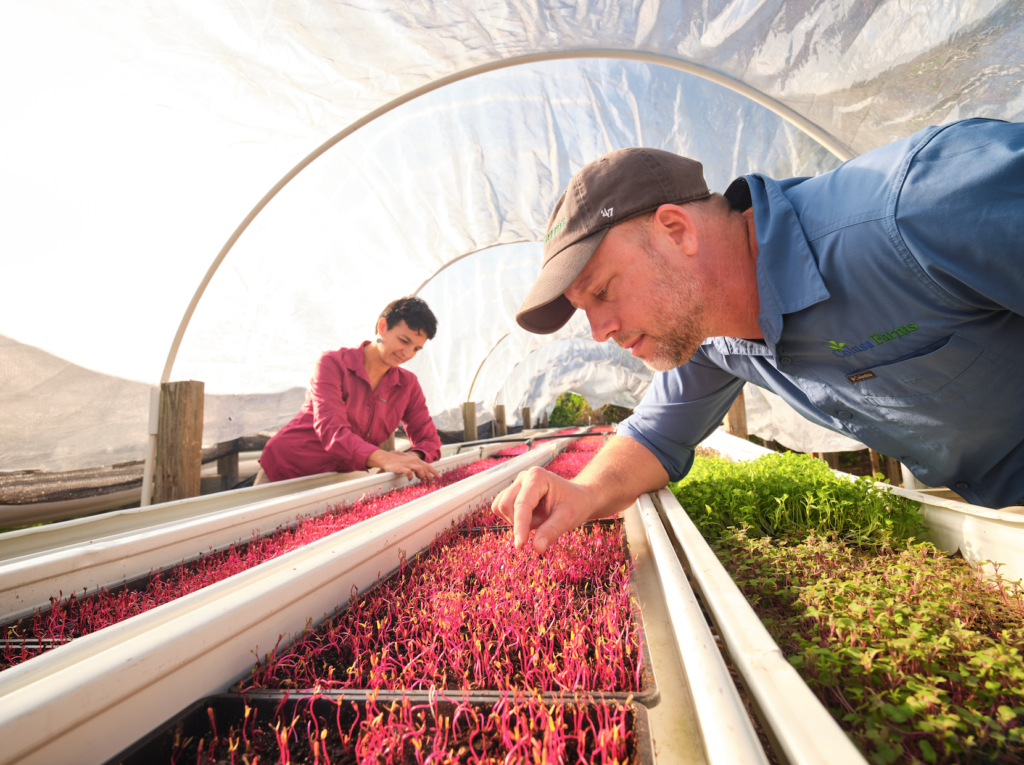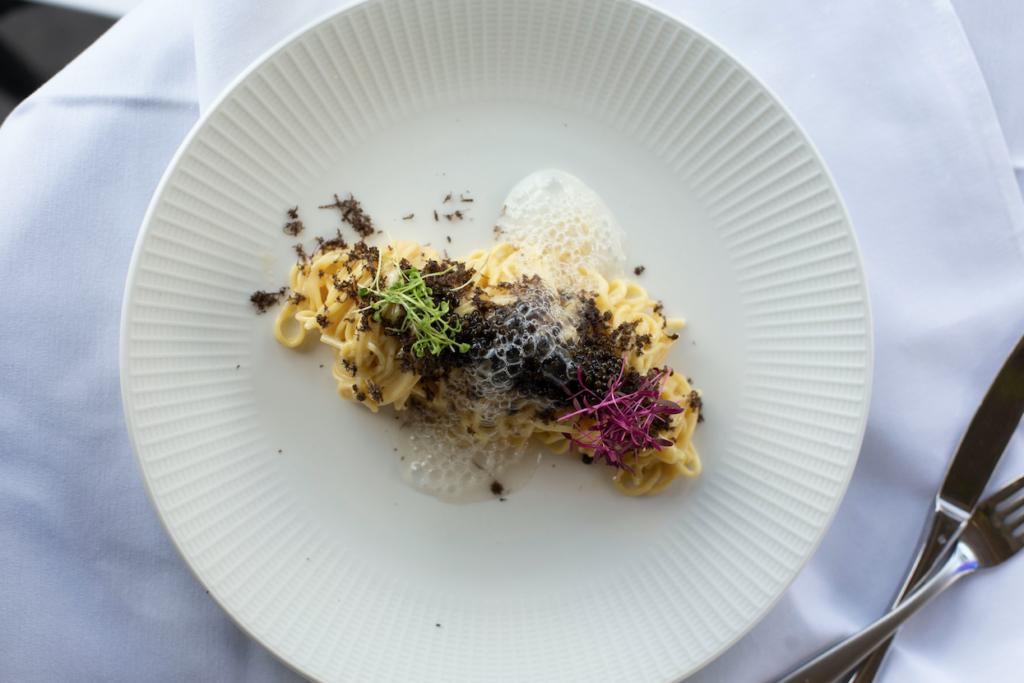When Janelle Francis began growing microgreens at the beginning of 2020 on Francis Farms, her 2.5-acre spread in Punta Gorda, she saved the first batches for herself. The tiny greens—bigger than a sprout but smaller than a baby green—came from broccoli seeds. They were delicate but full of flavor and nutrition. “One ounce of broccoli microgreens is the same as eating a pound of broccoli,” Francis says.
Francis put them in her morning smoothies and served them to her family in salads. When she had a surplus, she listed the greens for sale on Facebook, curious to see if other people would be interested. She was flooded with requests.
These days, that demand is felt in many area farmers markets. Humberto Quintero at The Naples Micro-Farm sells green pea and sunflower microgreens by the pound to weightlifters who put them in their protein shakes. “They are really good for people who are working out and exercising,” Quintero says. “They have a lot of iron and other nutrients.” And Terry Kays from Tigertoes Herbs and Teas in Buckingham sees steady business from broccoli, kale, mustard and radish microgreens. He and his wife, Debby, will grow fenugreek and alfalfa on special request.
Local restaurants have eagerly adopted the greens, too. Diners can find them at Fogg Cafe at the Naples Botanical Garden, The Continental, Ocean Prime, Campiello, Chez Boët and Hob Nob. At Sea Salt in Naples, chef Joshua Zeman sources micro fennel, pea tendrils, curled cress and other microgreens from Colusa Farms and NoJo Greens to boost dishes’ nutritional and visual impact. The allium flavor of microleeks complements rich short ribs, while the salmon tartare is intricately garnished with tiny edible flowers. “Presentation at a high level is key,” he says. “The fact that microgreens are often high in antioxidants, minerals and vitamins makes them even more beneficial.”
Microgreens are harvested soon after germination, when the nutrients young plants need to grow are still contained in their new leaves. This gives them a density of nutrients, such as potassium, iron, zinc, magnesium and copper, that’s not found in fully grown greens. Microgreens are also an excellent source of antioxidants. According to a study published in the Journal of Agricultural and Food Chemistry, the nutrients in microgreens are up to 40 times more concentrated than those in fully grown leaves and vegetables.
Microgreens first began appearing on plates in San Francisco in the 1980s. Recently, they have grown in popularity thanks to small-scale farmers and local growers who have made them available at farmers markets. Unlike other crops, microgreens require minimal space and don’t need large amounts of fertilizer or water. “Most people can do it themselves,” Kays says. “It’s not a large investment. Get a 1020 tray [a standard size] with drain holes in the bottom, and you can do it with an inch of potting soil.”
As microgreens have become more widely embraced, local farmers have branched out from broccoli, radish, kale and pea microgreens into more unexpected varieties. Jonathan and Isabel Way of Colusa Farms in Naples have been growing microgreens since 2011, and in the last few years, started cultivating tatsoi, joi choi and bok choy. “They grow so well in our environment—more so than many of the other vegetables that we’re used to,” Jonathon says. “But a lot of people haven’t tried them. And they’re so good for you.”
In the last five years, the demand for microgreens has expanded beyond the dietary realm into cosmetics. Since microgreens contain ample amounts of vitamins A and B, in addition to other nutrients, they’re attractive to the personal care industry. Hungarian beauty brand Eminence Organic Skin Care has an entire line devoted to microgreens.
Thanks to their affordability, the seeds have been popular with gardening enthusiasts, too, especially during the pandemic. A bag of radish seed, for example, can cost $30 for five pounds. “That’s a lot of microgreens,” Kays, who is considering selling starter kits at Tigertoes, says. “You can grow for a year on that.”





